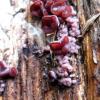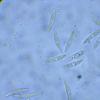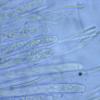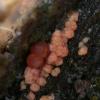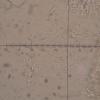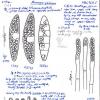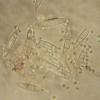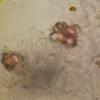
18-12-2025 21:17
Pol DebaenstThe identification took me to Byssonectria deformi

15-12-2025 07:09
 Danny Newman
Danny Newman
indet. Rutstroemiaceae sp. on unk. fallen leavesMc

19-12-2025 10:10
Patrice TANCHAUDBonjour, récolte réalisée en milieu dunaire, a

18-12-2025 17:23
 Bruno Coué
Bruno Coué
Bonjour,je serais heureux d'avoir votre avis sur c

18-12-2025 18:07
Margot en Geert VullingsThese plumes were found on rotten wood.They strong

17-12-2025 18:35
 Michel Hairaud
Michel Hairaud
Bonjour à tous/Hi to everyone I am passing along

15-12-2025 15:48
 Danny Newman
Danny Newman
Melanospora cf. lagenaria on old, rotting, fallen

15-12-2025 15:54
 Johan Boonefaes
Johan Boonefaes
Unknown anamorph found on the ground in coastal sa
I found this Ascocoryne on decayed Quercus in Japan.
I think it's typical A. cylichnium, ascospores multiguttulate, 24-32 x 4.5-6 microns, finally 5 septate, producing conidia directly.
Associated conidiomata, small cerebriform, 1-2mm, somewhat gelatinous, conidia 3.5-4.5 × 1microns, allantoid.
I couldn't find such anamorph of A. cylichnium in literature.
Is it true A. cylichnium and its anamorph?
regards,
Kutsuna

it looks very much like the anamorph of Ascocoryne inflata Wilson, the teleomorph however is probably very young, it lacks the inflated paraphyses (or it represents a different species). if you keep the collection moist for a few days you should be able to find germinating spores with globulose conidia-chains
regards,
Stip
Thank you for your prompt reply.
As you say, it looks like anamorph of A. inflata.
Immature paraphyses of A. inflata are clavate and multiguttulate as my photos?
Maybe, it is teleomorph of A. cylichnium with anamorph of A. inflata?
Kutsuna

no anamorph of cylichnium is known by me but if you keep your collection alive for a few days, cylichnium will produce conidia inside living asci.
Stip
OK, I'll give it a try.
Thank you.
Kutsuna

I only wanted to ask whether the name Ascocoryne inflata Wilson is actually valid ?
I found it several times in Brittany.
Amitiés
Michel

I must correct Stip: A. cylichnium forms conidia inside dead asci or on free spores.
And your fungus cannot be A. inflata. It looks mature and the difference to A. inflata is in the absence of the two large oil drops in the living spores. Your multiguttulate spores fully match A. cylichnium, also I see one septate spore, from which these subglobose conidia are formed that swim around.
Now Stip is right in the fact that we have never seen an anamorph in A. cylichnium. In fact, this anamorph strongly resembles that of A. inflata.
Also the contents of the paraphyses with the guttules inside fully match cylichnium (see below).
Now I suggest to make a section of the undoubtedly mature apothecia. Look for the medullary hyphae: A. inflata and sarcoides have very narrow hyphae with ample gel between, while cylchnium has broad hyphae with few gel. Also there occur druses of crystals in the medulla in A. cylichnium but not in the others.
Zotto

I am not sure if A. inflata is validly published. It is not published in a journal but in a dissertation, the validity depends on the fact if it is printed and if so on the quantity and distribution, see Mycotaxon 13 187-190. These facts are unfortunately unknown to me.
cheers,
Stipc
My fungus have broad hyphae (about 10 microns wide) and crystals.
So, I think, it is A. cylichnium and anamorph of A. inflata growing nearby.
Thank you.
Kutsuna

I assume that inflata is invalid as the dissertation probably exists only as a few copies.

Regards
Martin
Update: found it!

